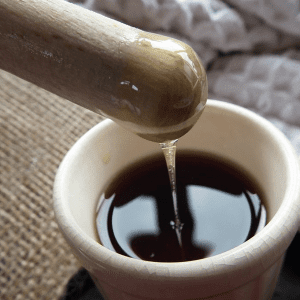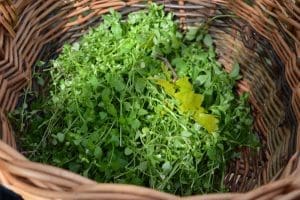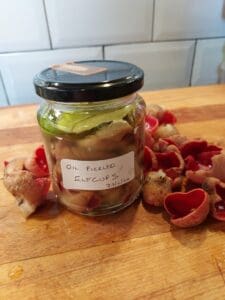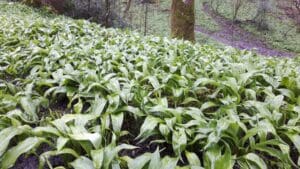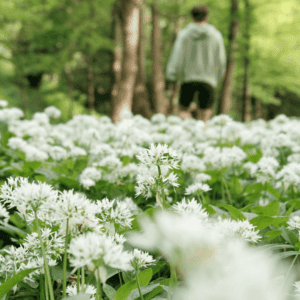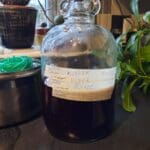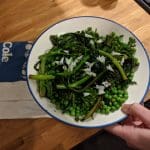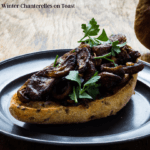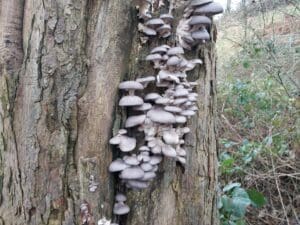When we’re Foraging in February the weather tends to still be cold and there’s still the risk of snow and frost but on the odd days when the sun does shine it gives me hope that spring is just around the corner.
So what can you forage in February? Here are our top five picks for the month.
Scarlet elf cups
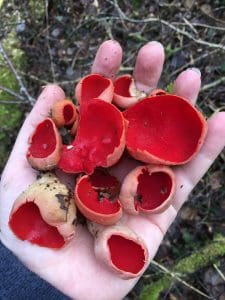
A lovely late winter mushroom that’s easy to ID, something we often find when foraging in February their only lookalike is the Ruby Elf cup that’s also edible. They get their common name as they were supposedly used by elfs as drinking vessels and I like to follow this tradition by filling them with birch sap. They hold their bright red colour throughout cooking so are great for brightening up dishes. Look for them growing on damp, decaying hardwoods, if you find a good patch they can appear in their hundreds.
Click here for the ID guide to Scarlet elf cups.
Chickweed
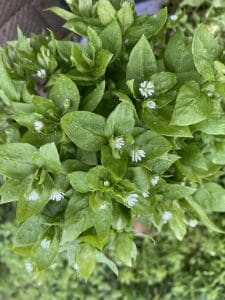
A plant that’s available most of the year but perhaps at its best in late winter/early spring. It can be eaten raw or cooked and has a mild lettuce type flavour. Most people will have chickweed growing in their gardens so rather than composting it, use it for its cleansing and healing properties and it’s also packed full of vitamins and minerals. The key feature to look for is the ‘mohican’ of fine hairs running down the stems which distinguishes it from any lookalikes.
Click here for the ID guide to Chickweed.
Nettles
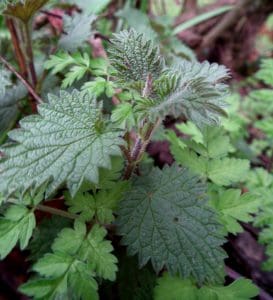
Again a plant that’s available most of the year but at its best now. The leaves are packed full of iron and Vitamin A and D use them as a spinach alternative or to make a tea which is an amazing winter tonic.
Click here for the ID guide to Nettles.
Wild garlic
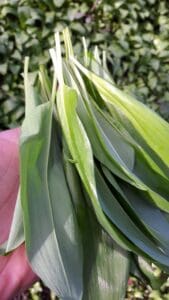
The first shoots of wild garlic normally appear in February, it’s a plant that seems to get more and more popular each year. The strong scent is a key feature, you can normally smell it before seeing it. Look for it in ancient woodlands, river banks and hedgerows, but remember to leave the bulbs in the ground and only take what you need.
Click here for the ID guide to Wild Garlic.
Lesser Celandine
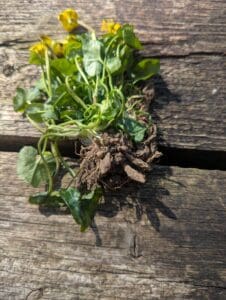
A plant that’s not really used much now but one that would have been vitally important to our ancestors as the cooked roots were an important source of carbohydrates. These knobby tubers are said to resemble piles, and according to the doctrine of signatures this resemblance suggests that it could be used to cure piles. It is often known as Pilewort. The flowers which emerge towards the end of the month are seen as one of the harbingers of spring.
Click here for the ID guide to Lesser Celandine.
Recipe of the month – One to Cook when Foraging in February
Nettle and Wild Garlic Beef Wellington
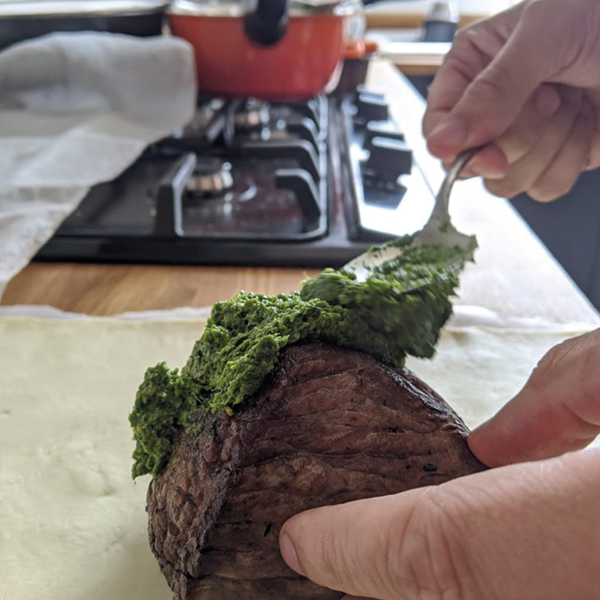
This recipe is possibly one of my all-time favourite recipes. Most recipes call for beef sirloin but if you have a decent local butcher you can usually get away with using a standard beef joint (much cheaper)
Ingredients:
- Beef Joint – 500g
- 500g pre-made puff pastry
- 250g chestnut mushrooms – finely chopped
- 2 onions – finely chopped and diced
- 250 wild mushrooms – I used a mixture of elf cups and velvet shanks (if you don’t have wild just double up on chestnut mushroom
- 100g nettle – finely chopped
- 100g wild garlic – finely chopped
- a knob of butter
Method:
- Heat up a pan on the stove until it’s smoking hot
- Brown the beef on each side in the super-hot pan – about 1 minute each side
- Place on an oven tray and bake in the oven for 25 minutes gas mark 7 or 180C
- Remove from the oven and leave to chill on the side
…..Whilst the meat is cooling…..
- Melt a knob of butter in the same pan you used to brown the meat (reusing the juices)
- Fry off the mushrooms and onion until fully browned, about 10 minutes
- Add the finely diced nettles and cook for a further 5 minutes
- Remove from the heat and place in a wide bottom bowl to cool
….Let that cool and….
Blend the wild garlic to a smooth paste
….Bringing it all together….
- Layout the puff pastry on the non-stick paper
- Place the cooled beef on top of the puff pastry in the center
- Spread the wild garlic paste over the top of the beef as layer 1
- Next spread the cooled mushroom and nettle over the top of the garlic paste (try to cover the sides as well)
- Fold the puff pastry over the top of the beef and fold in the sides so that the beef is fully covered
- Bake the whole lot in the oven for 45 minutes at gas mark 8 or 180C
- Remove the wellington and let the meat rest for about 20 minutes, cut open and enjoy with roast potatoes and some red wine gravy.
For a meat free twist you can use a whole beetroot cut in half and roasted as a substitute for beef
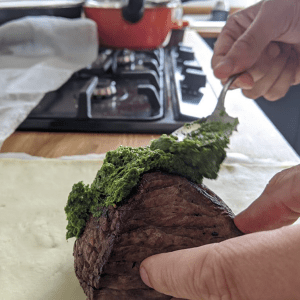
Click here for more Winter recipes.
What to forage in January.
Christmas is over, you’ve already broken your new year’s resolution and the weather’s foul but believe it or not there’s still plenty to be foraging in January. Make the most of those brief breaks in the rain and burn off some of that Christmas dinner.
What to forage in March.
We’re Foraging in March, the weather is slowly warming up and flowers are starting to bloom but the weather can vary across the country and further north there’s still a risk of snow. The Anglo-Saxon name for the month was Hlyd monath meaning stormy month. If the weather is terrible take some solace in this old saying ‘March winds and April showers, bring forth May flowers.’
